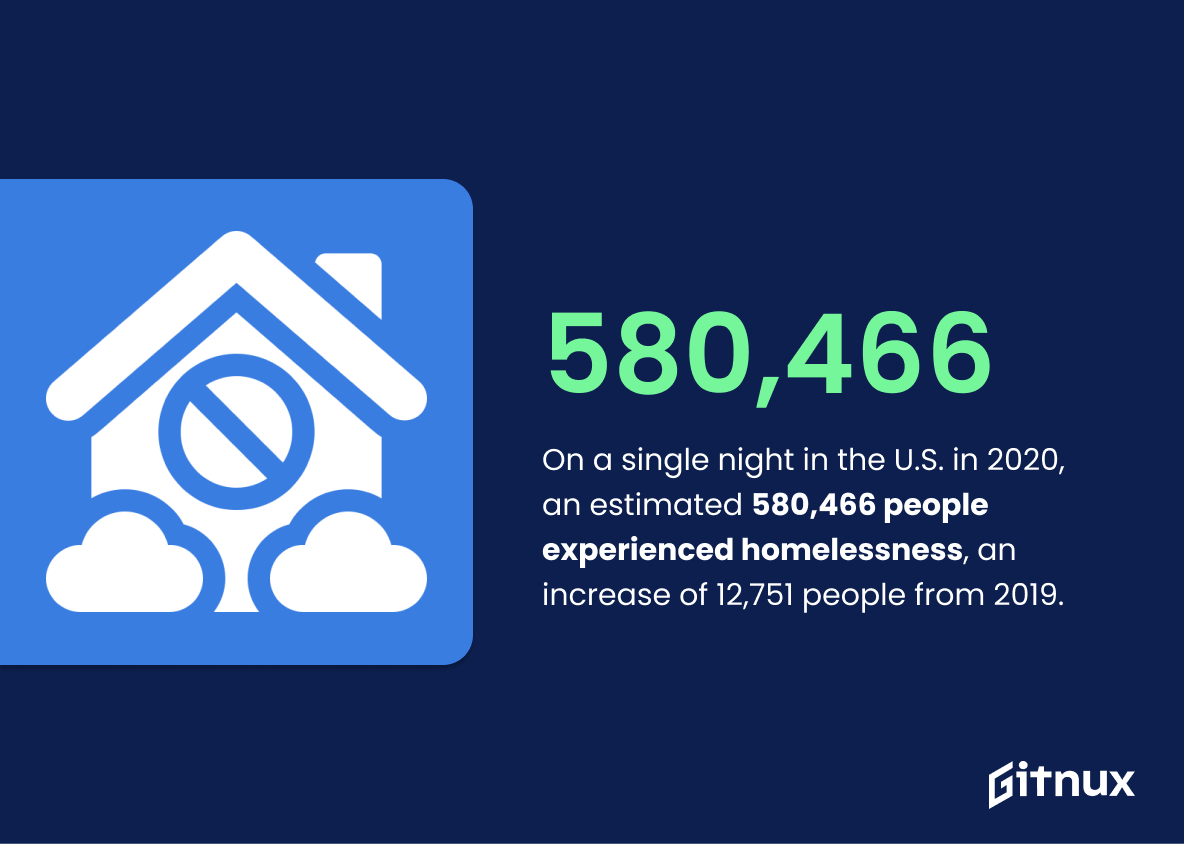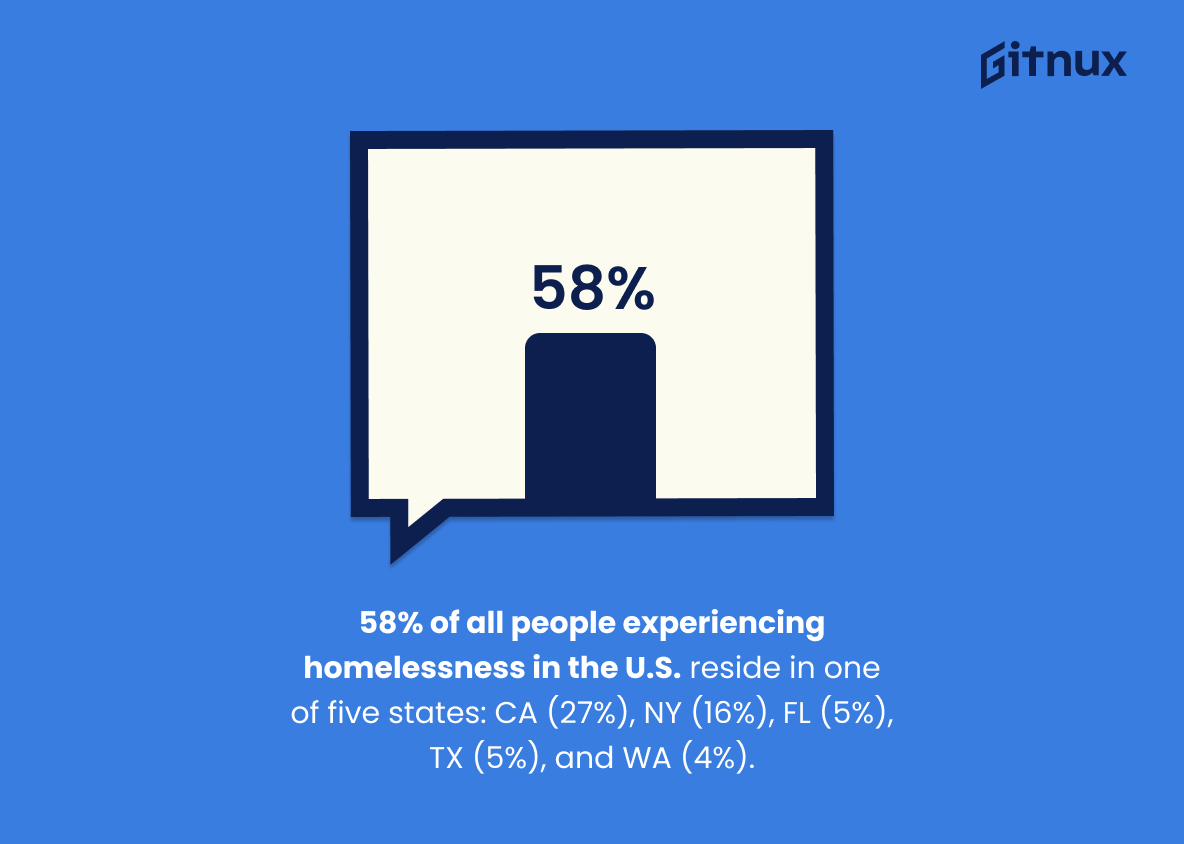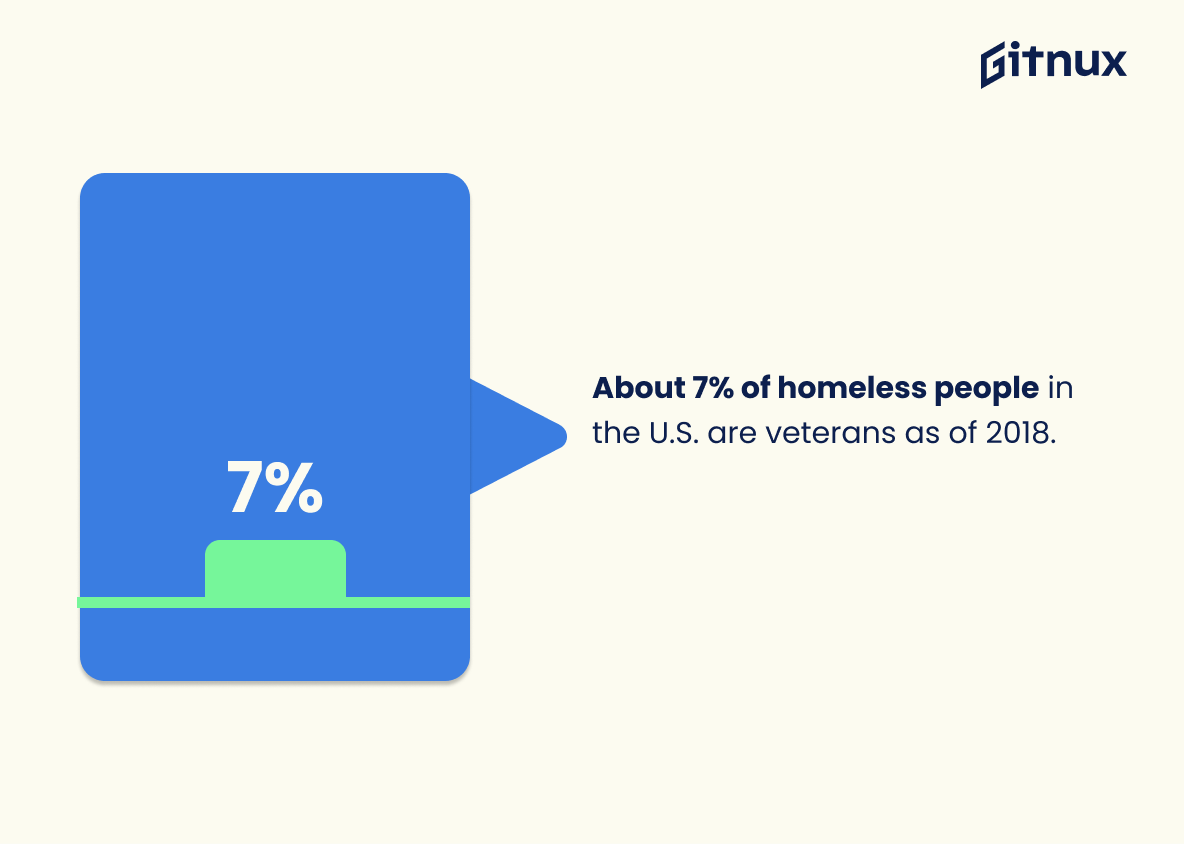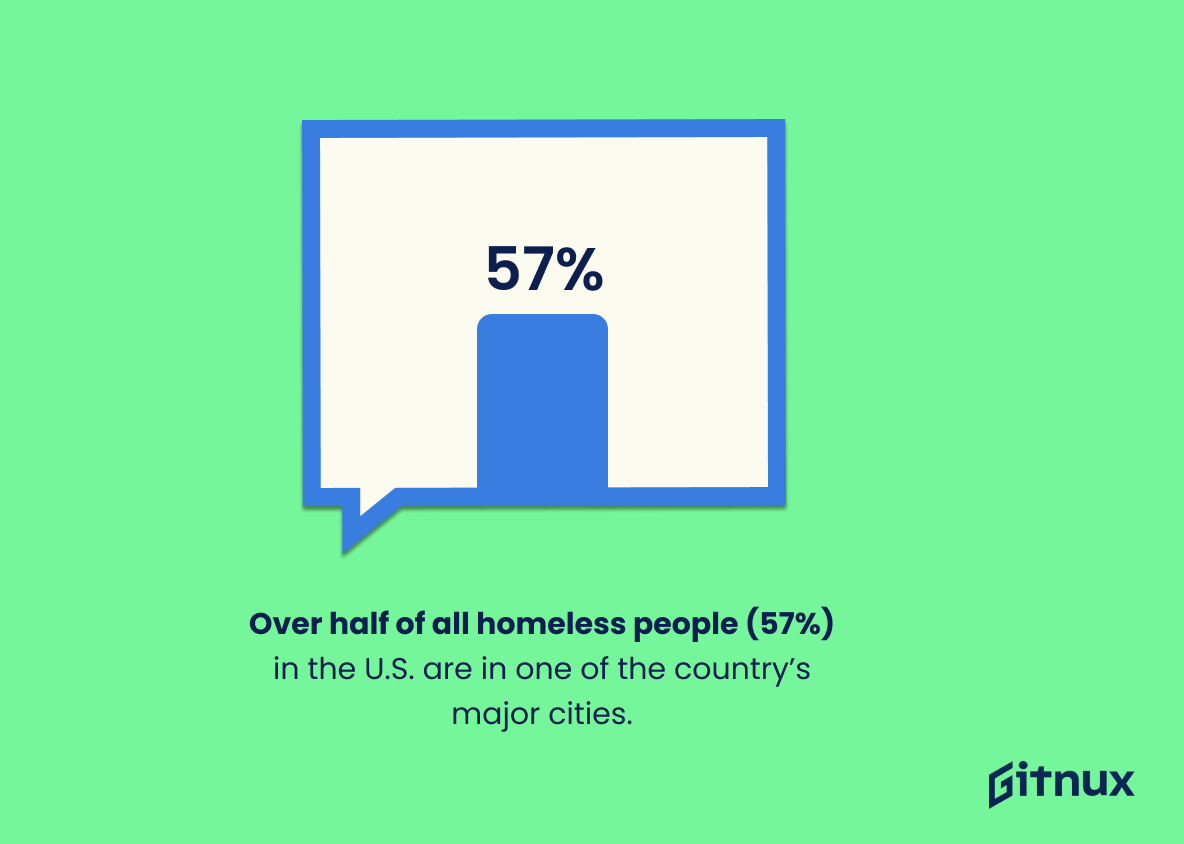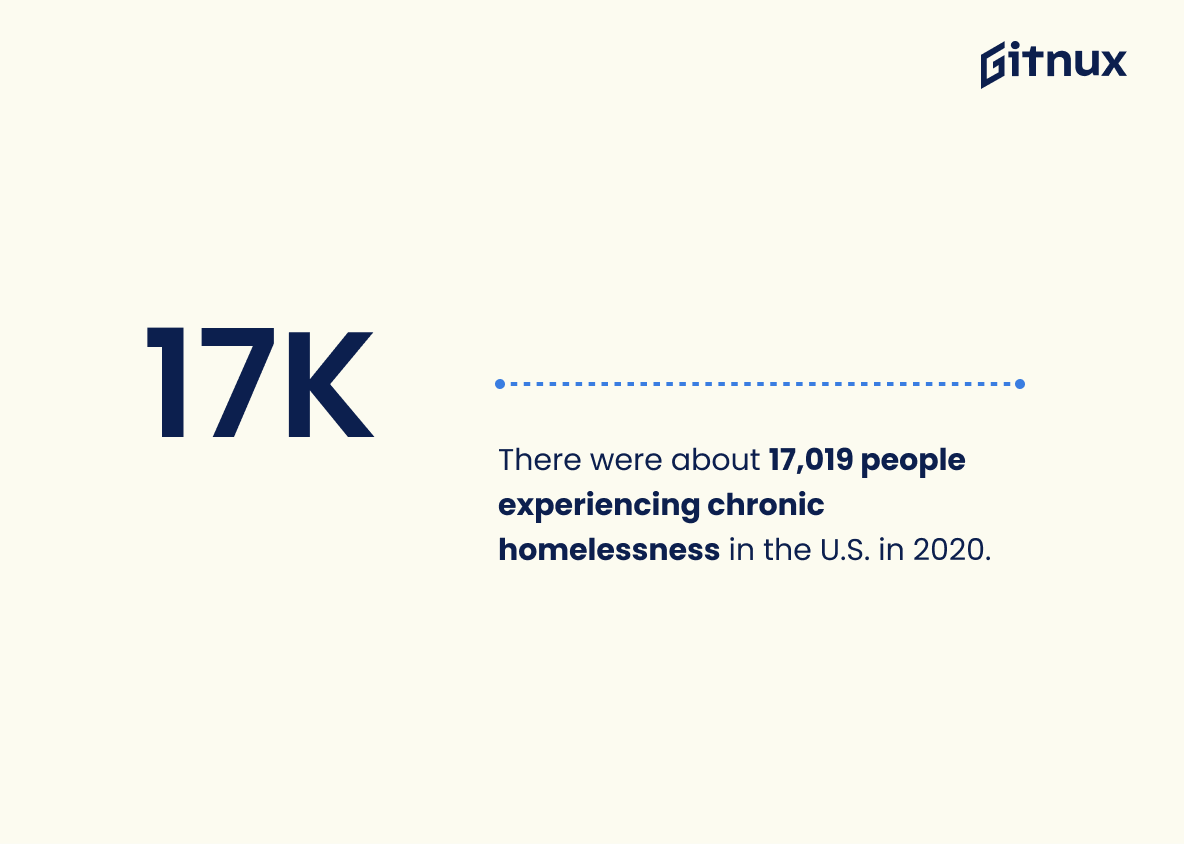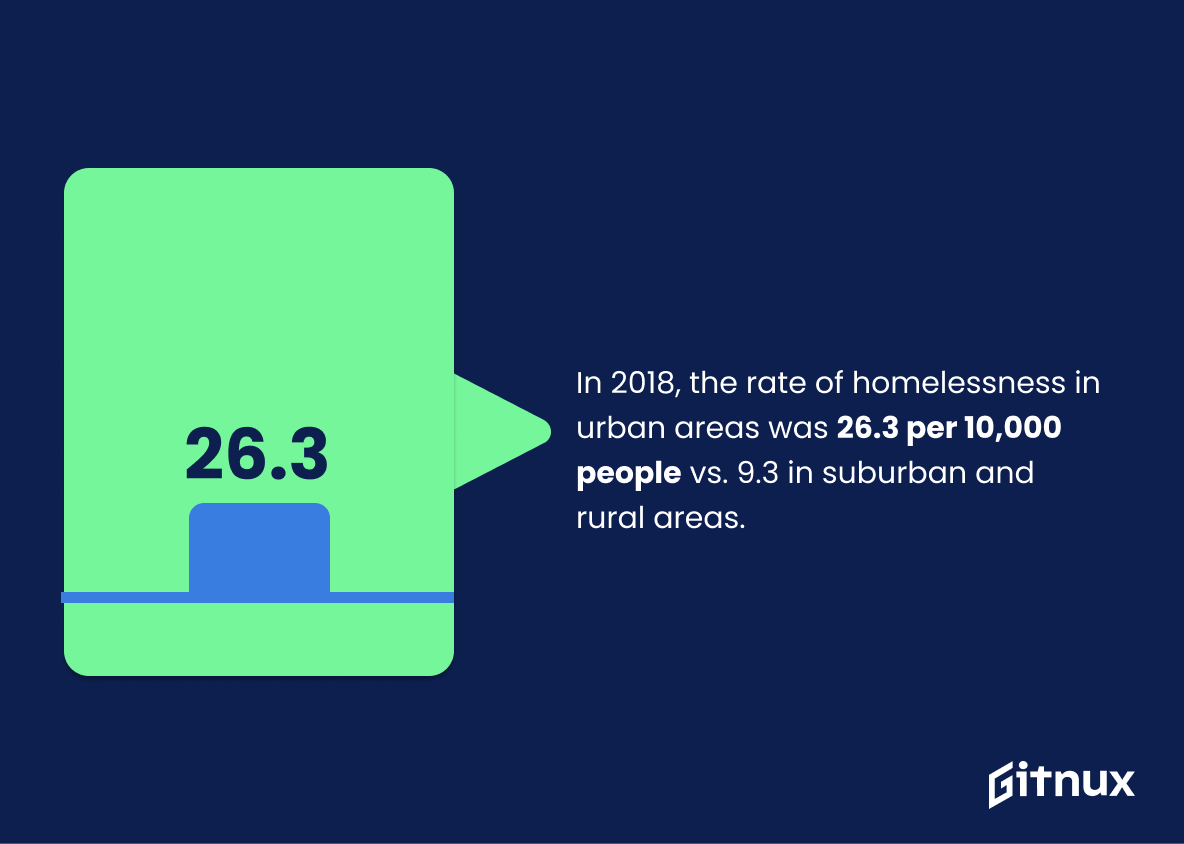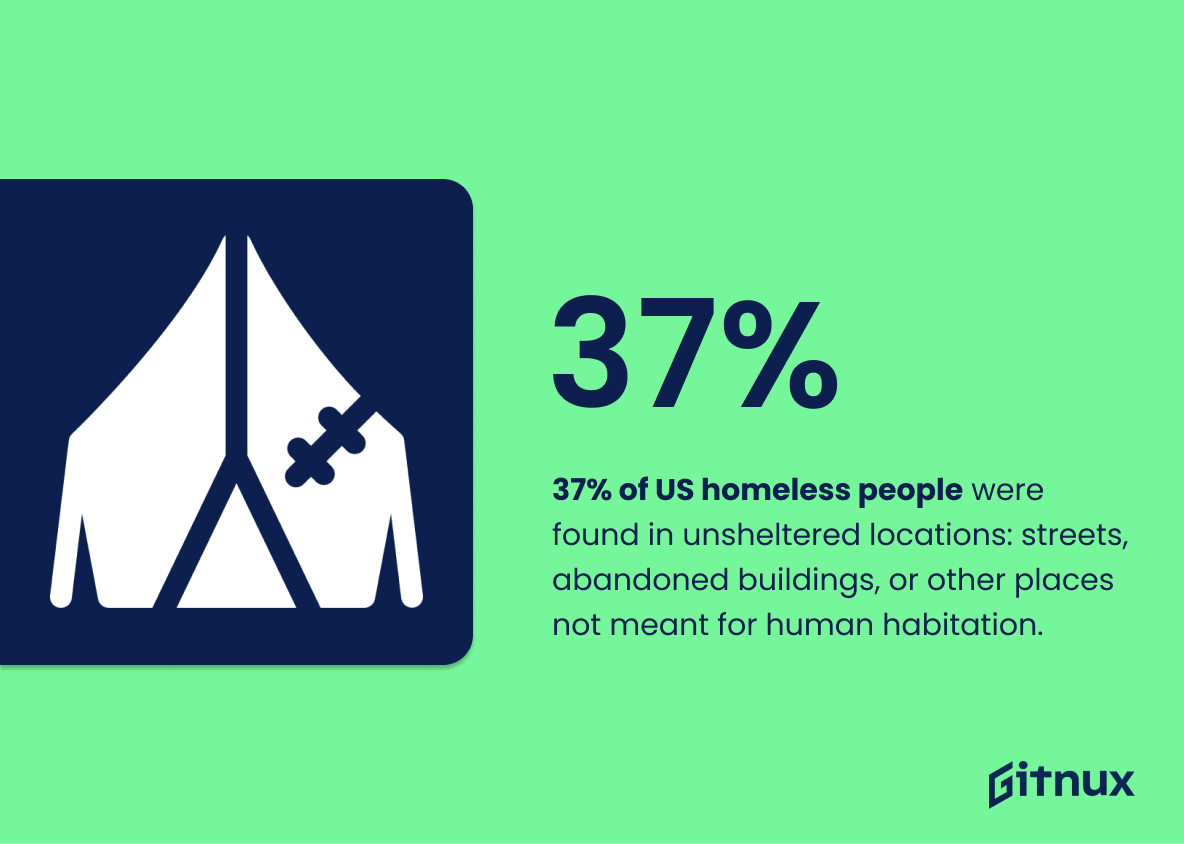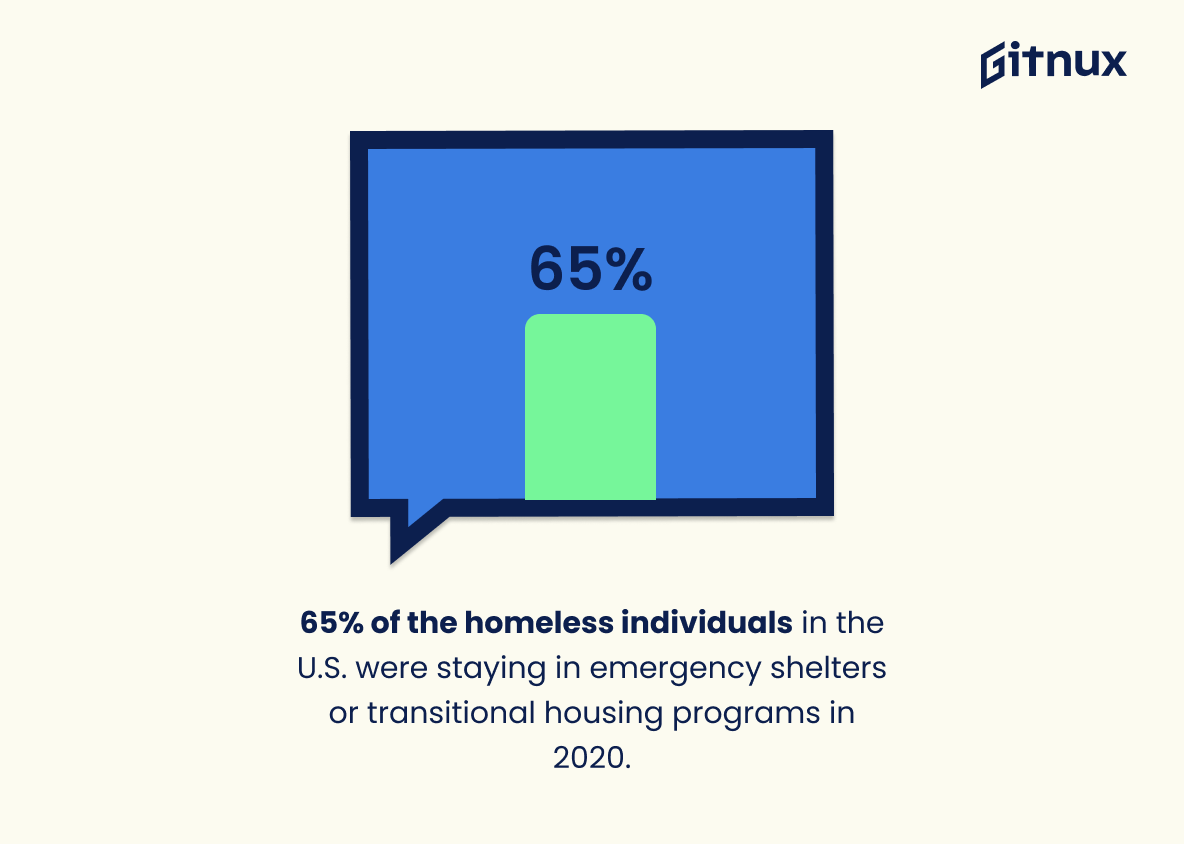In the Land of Opportunity, it’s a stark reality that homelessness is pervasive and affects countless lives every day. The issue of homelessness in America is both complex and multifaceted, infiltrating every city, state, and demographic. It’s crucial that we lend this issue the attention it rightly deserves, and the best way to do this is to dig into the numbers – because they rarely lie. This blog post aims to illuminate the startling statistics surrounding homelessness in America, providing insightful context and fostering a broader understanding of the scope of this national crisis. So, join us as we unpack the harsh realities that thousands confront on a daily basis, reveal the depth of this issue, and explore potential solutions. Reading these statistics is just the first step towards igniting change and lending a hand to those in need.
The Latest Homeless In America Statistics Unveiled
On a single night in the U.S. in 2020, an estimated 580,466 people experienced homelessness, an increase of 12,751 people from 2019.
The chilling reality unveiled by these numbers is a sobering testament to the deepening crisis of homelessness in America. A single winter night in 2020 compelled an estimated 580,466 souls under a roofless sky – echoing an alarming increase of 12,751 from the previous year. This escalation, inexorably interwoven into the broader narrative of homelessness in America, underlines the urgency and magnitude of the issue. Conveying an incremental yet potent shift in the nation’s struggle with homelessness, this data ignites a renewed conversation about our collective responsibility for those trapped in the cycles of poverty, exclusion, and despair. Unveiling the raw story behind the lives of over half a million Americans, it challenges us to redraw policy lines and rethink community efforts, creating a lasting impact on our understanding and response to this issue.
More than half (58%) of all people experiencing homelessness in the U.S. reside in one of five states: CA (27% or 161,548 people), NY (16% or 91,897), FL (5% or 28,328), TX (5% or 27,229), and WA (4% or 21,577).
In the realm of Homeless In America Statistics, these figures cast a glaring spotlight on the geographic disparity in homelessness rates. Digging into the numbers, we discover an alarming fact – 58% of all individuals grappling with homelessness in the U.S. find themselves in only five states. A closer inspection unearths further unsettling details: the Golden State of California is home to a staggering 27% or 161,548 people in this predicament. Following close on its heels is New York, carrying the weight of 16% or 91,897 fellow human beings without a roof over their heads. The statistics don’t stop there – Florida and Texas each represent a 5% share of the homelessness pie in the U.S., accounting for 28,328 and 27,229 people respectively. Climbing steadily onto this distressing leaderboard is Washington, hosting 4% of the national homeless population or 21,577 individuals. The stark imbalance in these numbers, far from mere demographic detail, underscores the looming strain on resources and policies in these five states and signals an urgent necessity for targeted intervention.
19 out of every 10,000 people in the U.S. were homeless on a single night in 2018.
Taking a magnifying glass to the numbers, let’s explore the reality they unravel. Picture this: for every 10,000 individuals you pass in the U.S., 19 of them were without a roof over their head on any given night in 2018. It gives vivid understanding of how wide-ranging the issue of homelessness is across America. Relating it to a population size that most can comprehend draws a candid picture of the scenario. This ‘one in ten thousand’ representation pulls you into the stark atmosphere of what it truly means to watch nearly two dozen individuals fight the hard battle every night, in every town, city, and state. The simplicity of this ratio conveys the urgent and widespread nature of homelessness and empowers us to understand its prevalence, thereby stimulating a determined pursuit of solutions.
About 7% of homeless people in the U.S. are veterans as of 2018.
The omnipresent shadow of homelessness looms heavily over the United States, casting an undeniable pall on the nation’s pride. Perhaps most disheartening of it all is the staggering reality that around 7% of this homeless population once donned the uniform of service, pledging their lives to the security and prosperity of the nation they now find no shelter in. As of 2018, that demographic persists, a chilling testament to an interwoven network of societal issues. These gallant souls, our veterans, are trapped between the intersection of inadequate support from healthcare, mental health services, and the socio-economic system at large. This reverberates through the complex tapestry of American homelessness, adding another layer of urgency to the call for tangible, sustainable and empathetic solutions. And, indeed, it steers the long overdue conversation towards the true cost of service, sacrifice, and the nation’s debt to its heroes.
In the U.S. in 2017, over 40% of people experiencing homelessness were Black or African American, despite representing just 13% of the general population.
Delving into the deep tapestry that is homelessness in America, we unearth an alarming disparity that provides a compelling viewpoint on ethnoracial imbalances. In 2017, over 40% of the people grappling with homelessness were Black or African American, a group which only made up 13% of the overall population. This statistic pauses us in our tracks, compelling us to challenge our assumptions and probe deeper into understanding the root causes behind this imbalance. It underscores the urgent need for assessing systemic racism and its intersection with homelessness. More than just numbers on a page, this figure serves as a spotlight, bathing in harsh light the stark inequality that necessitates a concerted effort to reform our system for a more equitable future.
Approximately 9% of homeless adults in the U.S. are aged 24 or younger.
An intriguing insight within our exploration of homeless statistics in America reveals that roughly 9% of homeless adults found across the country are aged 24 or younger. This proportion truly accentuates the threat of homelessness that looms over the heads of even our younger generation, disturbingly highlighting the breadth of this issue. In unveiling this statistic, we pull back a layer of the shadowy face of homelessness, one often overlooked given the common stereotype associating homelessness predominantly with mature adults. So, this fact ceases to be merely a numeric depiction and transcends into a sobering snapshot of lost potential and youth taken captive by homelessness in America. The hope is, bringing this reality to light may promote greater comprehension, empathy, and urge for effective interventions.
Over half of all homeless people (57%) in the U.S. are in one of the country’s major cities.
Delving into the heart of this striking statistic, we uncover a stark reflection of the nation’s homelessness crisis – that over 57% of all homeless individuals find themselves seeking refuge in the country’s major cities. This discovery casts a spotlight on these bustling metropolises, revealing unexpected dimensions of hardships hidden in their vibrant, thriving landscapes. This number, severe in its implication, breathes significance into the discussion surrounding ‘Homeless in America’. It underscores a pressing need to address shelter deficiencies in our cities, while stimulating ideas for urban policy modifications. In the grand tapestry of homelessness statistics in America, this piece of data weaves a compelling narrative of visible distress within our expanding urban ecosystems.
There were about 17,019 people experiencing chronic homelessness in the U.S. in 2020.
This illuminating figure of approximately 17,019 individuals experiencing chronic homelessness in the U.S. in 2020, casts a striking spotlight on the severity and persistent nature of homelessness in America. Not only does this figure shape public perception about the issue, but it also provides invaluable insights for policy makers, social workers and nonprofits. It emphasizes the urgency for targeted efforts to tackle this deeply entrenched problem. Moreover, it underscores the need for more durable and affordable housing solutions, integrated with follow-up services. So, when we incorporate this statistic into our blog post, it’s to magnify the interaction between numbers and narratives, on one hand, and policy execution and public understanding, on the other. Our aim is to bring our readers face to face with the stark reality and demand their conscious engagement with the homelessness epidemic.
In 2018, the rate of homelessness in urban areas was 26.3 per 10,000 people vs. 9.3 in suburban and rural areas.
This compelling figure showcases a stark contrast between urban and rural areas in terms of homelessness rates in America, rendering a vivid panorama of the predominantly concentrated problem in city regions. Seen through the statistical lens, the urban 2018 homelessness rate of 26.3 per 10,000 people towers over the 9.3 rate in suburban and rural areas. This disparity underscores the escalating crisis within our cities, where almost three times as many people per capita grapple with homelessness. In the realm of discussions about homelessness in America, such figures serve as poignant markers of where the challenges are most accented and where resources might be most critically needed.
States with the highest rates of homeless people in 2020 included Hawaii (46/10,000), New York (47/10,000), and California (54/10,000).
In the complicated mosaic of Homelessness in America statistics, the sharp data points illustrated by Hawaii (46/10,000), New York (47/10,000), and California (54/10,000) serve as significant guide markers. These figures show the trajectories of homelessness within some of the nation’s most densely populated regions. Understanding the prevalence of homelessness in these states peels back another layer on the complexity of this urgent issue, revealing, in stark numbers, the urgency of implementing effective solutions. So, as we continue to probe into the realities of homelessness, these figures serve as a compass pointing towards areas that require immediate attention and resources.
In the U.S. 37% of homeless people were found in unsheltered locations such as on the streets, in abandoned buildings, or in other places not meant for human habitation.
Reflecting upon the stark reality of homeless individuals in America, the statistic that 37% of them are discovered in unsheltered locations such as streets, abandoned buildings, or other non-residential environments paints a vivid picture of this crisis. This unsettling percentage is a testament to the severity of the situation and further emphasizes the dire need for immediate action and innovative solutions. Providing a sobering insight into just how many individuals are surviving without adequate shelter, it calls attention to the urgent need for increased housing resources, robust support systems, and improved public policy. The statistic serves as a stark reminder that homelessness is not simply being without a home—it often means surviving in places unsuitable for living, amplifying struggles and challenges faced by this vulnerable population.
Almost two-thirds (65%) of the homeless individuals in the U.S. were staying in emergency shelters or transitional housing programs in 2020.
In the canvas of homelessness in America, the hue of emergency shelters and transitional housing programs is pervasive. A staggering 65% of homeless individuals in the U.S. relied on this safety net in 2020, a statistic which paints a vivid picture of vulnerability but also emphasizes the pivotal role of these temporary residences. As such, these figures animate a stark portrait of America’s homeless, confronting us with the hard truth to inspire action while emphasizing the importance of bolstering our support systems, hence contributing profoundly to the discourse.
Conclusion
In conclusion, the alarming statistics on homelessness in America underscore the persistent and critical issue that plagues our society. It’s a reflection of the systematic challenges, such as lack of affordable housing, poor mental and physical health support, and persistent poverty that needs immediate address. It’s also important to mention the part individuals play in understanding, mitigating and eventually eradicating this problem. As a nation, we must unify our strategies and resources to give the homeless population the aid and empathy they so desperately need. Let these numbers not be just statistics but a call to action, a rally cry towards creating a future where everyone has a place they can call ‘home’.
References
0. – https://www.endhomelessness.org
1. – https://www.www.usich.gov
2. – https://www.www.hudexchange.info
3. – https://www.www.va.gov
